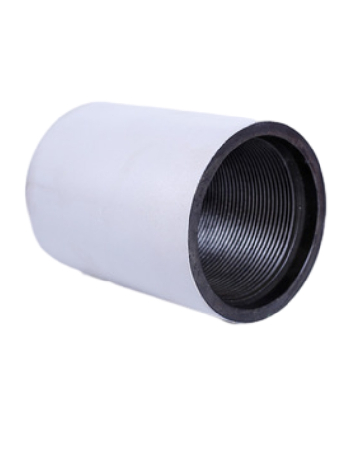- Afrikaans
- Albanian
- Amharic
- Arabic
- Armenian
- Azerbaijani
- Basque
- Belarusian
- Bengali
- Bosnian
- Bulgarian
- Catalan
- Cebuano
- Corsican
- Croatian
- Czech
- Danish
- Dutch
- English
- Esperanto
- Estonian
- Finnish
- French
- Frisian
- Galician
- Georgian
- German
- Greek
- Gujarati
- Haitian Creole
- hausa
- hawaiian
- Hebrew
- Hindi
- Miao
- Hungarian
- Icelandic
- igbo
- Indonesian
- irish
- Italian
- Japanese
- Javanese
- Kannada
- kazakh
- Khmer
- Rwandese
- Korean
- Kurdish
- Kyrgyz
- Lao
- Latin
- Latvian
- Lithuanian
- Luxembourgish
- Macedonian
- Malgashi
- Malay
- Malayalam
- Maltese
- Maori
- Marathi
- Mongolian
- Myanmar
- Nepali
- Norwegian
- Norwegian
- Occitan
- Pashto
- Persian
- Polish
- Portuguese
- Punjabi
- Romanian
- Russian
- Samoan
- Scottish Gaelic
- Serbian
- Sesotho
- Shona
- Sindhi
- Sinhala
- Slovak
- Slovenian
- Somali
- Spanish
- Sundanese
- Swahili
- Swedish
- Tagalog
- Tajik
- Tamil
- Tatar
- Telugu
- Thai
- Turkish
- Turkmen
- Ukrainian
- Urdu
- Uighur
- Uzbek
- Vietnamese
- Welsh
- Bantu
- Yiddish
- Yoruba
- Zulu
petroleum tubing coupling
Understanding Petroleum Tubing Couplings Essential Components in Oil and Gas Operations
In the complex world of oil and gas extraction, efficiency and reliability are of utmost importance. One of the critical components that contribute to the successful transport of hydrocarbons from the well to the surface is the petroleum tubing coupling. These couplings play a vital role in maintaining the integrity of the tubing system, ensuring that the flow of oil and gas is both safe and efficient.
What is a Petroleum Tubing Coupling?
A petroleum tubing coupling is a mechanical fitting that connects two sections of tubing in oil and gas operations. These couplings are designed to withstand extreme pressures and harsh environmental conditions, making them indispensable in the field. Typically made from high-strength steel, they are engineered to provide a reliable connection that prevents leaks and supports the flow of fluids under high pressure.
Types of Couplings
There are several types of petroleum tubing couplings, each designed for specific applications and conditions
. The most common types include1. Threaded Couplings These are the traditional coupling type that uses threaded connections to join tubular sections. They are popular due to their ease of installation and removal. However, they require precise machining to ensure a proper seal.
2. Welded Couplings In harsh environments where the risk of leaks is a concern, welded couplings are often preferred. These are permanently attached by welding, creating a strong bond that minimizes the likelihood of failures under extreme conditions.
3. Flanged Couplings Flanged couplings are often used when there is a need for quick disconnection. These couplings feature flanges that are bolted together, allowing for easy assembly and disassembly.
4. Compression Couplings These couplings rely on compressive force to create a seal between tubing sections. They are often used in high-temperature applications where thermal expansion could pose a threat to traditional connections.
Importance of Quality and Standards
petroleum tubing coupling

The quality of couplings is paramount in ensuring the safety and efficiency of petroleum operations. Standards set by organizations such as the American Petroleum Institute (API) dictate the quality and specifications for these components. API specifications cover material requirements, design criteria, and testing procedures to ensure that couplings can withstand the rigors of the oilfield environment.
Using substandard or improperly manufactured couplings can lead to catastrophic failures, resulting in costly downtime, environmental damage, and potential safety hazards for personnel. Therefore, operators must ensure that they source couplings from reputable manufacturers who adhere to industry standards.
Installation and Maintenance
Proper installation of petroleum tubing couplings is crucial to achieving optimal performance. Operators must follow guidelines and best practices to ensure that couplings are installed correctly. This includes aligning the tubing properly, using the correct torque settings for threaded connections, and ensuring that all surfaces are clean and free of debris.
Regular maintenance and inspection of couplings are also essential. Over time, couplings may experience wear and tear due to the harsh conditions they operate in. Routine inspections can help identify signs of corrosion, wear, or fatigue, allowing operators to address issues before they lead to failures.
Innovations and Future Trends
The oil and gas industry continues to evolve, with technological advancements playing a significant role in improving the performance and reliability of petroleum tubing couplings. Innovations such as advanced materials, smart sensors, and automation are being integrated into coupling designs, enhancing their durability and reducing the risk of failures.
Furthermore, the shift towards more sustainable and environmentally friendly extraction methods is prompting manufacturers to develop couplings that are not only robust but also less environmentally damaging. This trend reflects the industry's commitment to balancing operational efficiency with environmental stewardship.
Conclusion
Petroleum tubing couplings are integral components of oil and gas operations, facilitating the safe and efficient transport of hydrocarbons. Understanding their types, importance, and maintenance can significantly influence the overall performance of extraction processes. As the industry progresses, so too will the technology and standards surrounding these essential fittings, paving the way for safer and more efficient oil and gas operations. Investing in quality couplings and adhering to best practices is vital for the future success of the oil and gas industry.
-
Well Casing Extension Couplings – Applications and InstallationNewsJun.06,2025
-
Types of Crossover Subs in Drilling & CompletionNewsJun.06,2025
-
Key Features of High-Quality Tubing Pup JointsNewsJun.06,2025
-
Installation and Maintenance Tips for Steel Couplings for PipeNewsJun.06,2025
-
How to Select the Right Pup Joint for Oil & Gas OperationsNewsJun.06,2025
-
Applications of Stainless Steel Pipe CouplingsNewsJun.06,2025







